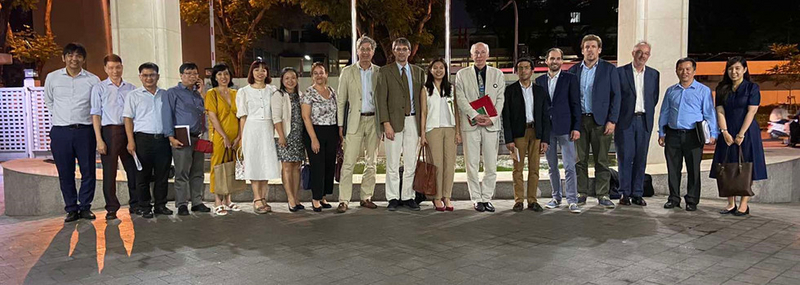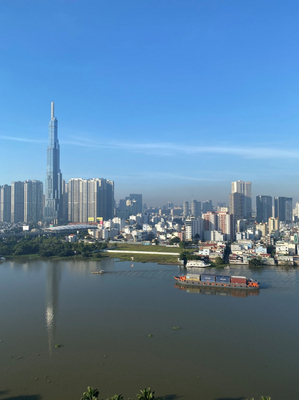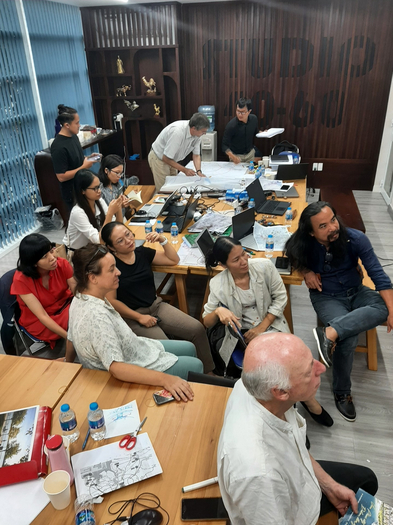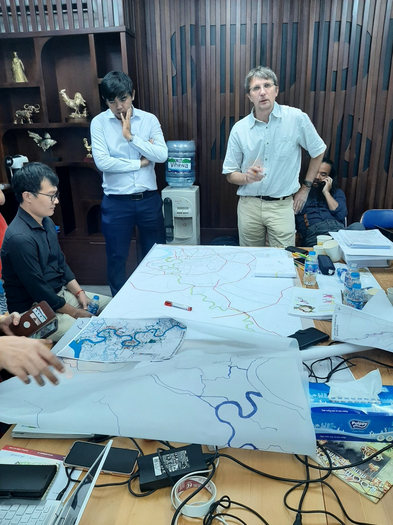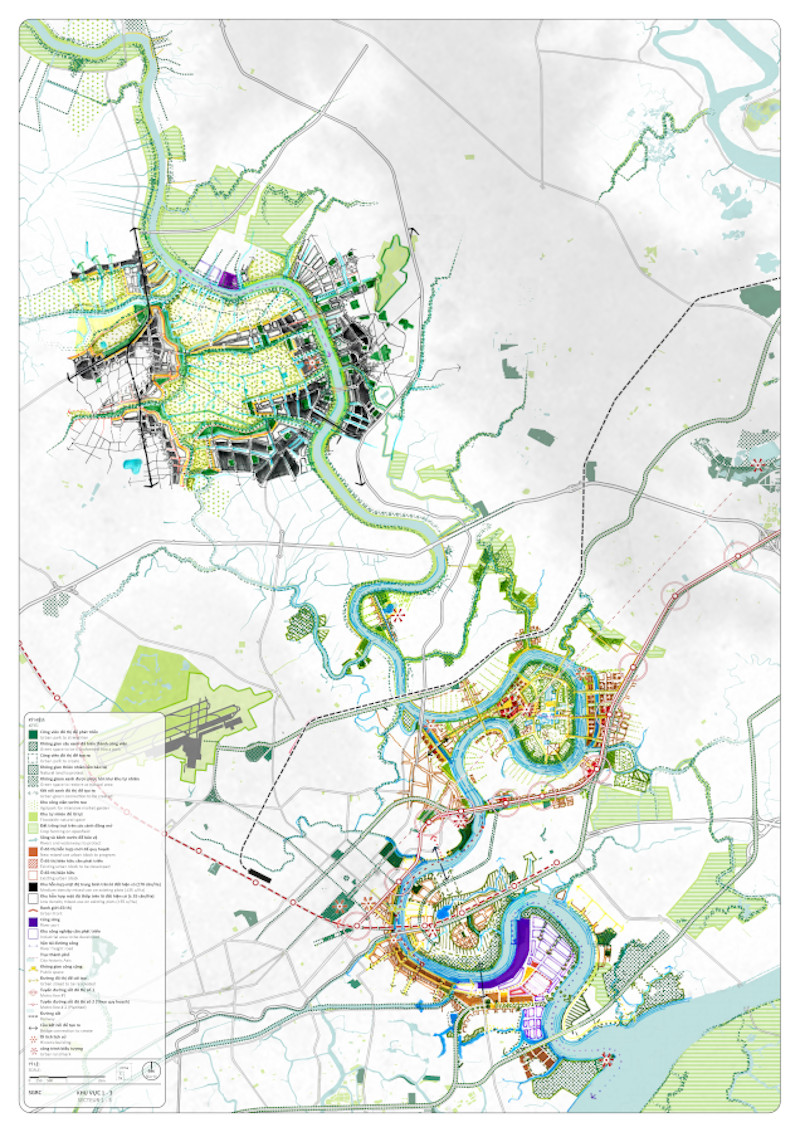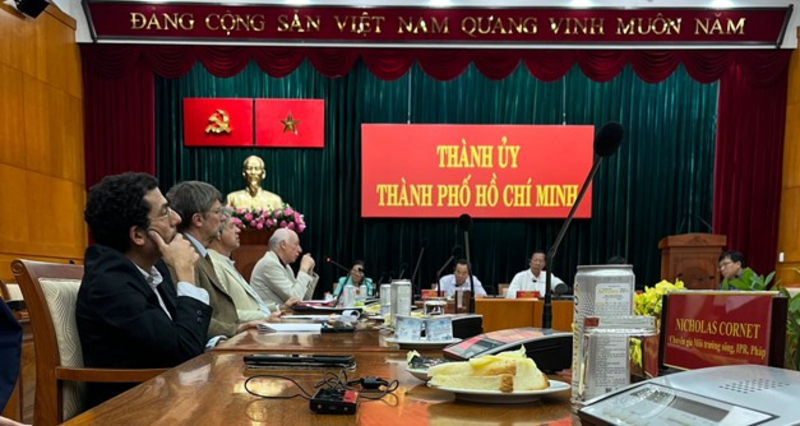The Saigon River Corridor Spatial Planning Workshop: Kicking off an intensive interdisciplinary and intercultural planning dialogue
Rivers undoubtedly hold a pivotal role for cities’ development. They serve as their main thoroughfare, recreation park, green and blue lung, and, more importantly, their life source. Therefore, rivers should be treasured and carefully developed to preserve their integrity and the whole services they provide to all living beings, and especially to the urban citizens.
Like the Seine River, the Saigon River is subject to contradictory injunctions between its commercial, logistical, and recreational uses, potentially weakening its scenic, ecological, and spiritual assets. The leaders of Ho Chi Minh City recognize the central role played by the Saigon River in shaping the city’s image and providing essential services to its population and visitors. They are fully aware of the challenges it faces in enhancing the economic attractiveness of the southern metropolis on both national and international scales, improving the quality of life of its inhabitants, and adapting to climate change. Hence, they aim to establish a dedicated development and planning strategy for the Saigon River corridor, seamlessly integrated into the general Construction Master Plan of the city.
That is why following the visit to Paris, last June, of a delegation led by the General Secretary of Ho Chi Minh City, Mr. Nguyen Van Nen, the Institut Paris Region (IPR), in collaboration with the Association of Vietnamese Scientists and Experts (AVSE Global), have been tasked with assisting the Department of Planning and Architecture (DPA) in this crucial planning endeavor. To this end, they jointly proposed to kick off this collaboration with a spatial planning workshop hosted by the DPA.
This event followed a series of initiatives and publications devoted to awakening the “dormant blue-green dragon” beneath the Saigon River, aiming to make it the true backbone of the metropolis in the forthcoming decades, alike the Seine River for Paris region. “Backbone” here means the focal space for deploying an exceptional range of activities and landscape services that are in the general interest for the population of the whole of the metropolis and hence dictate a strong, compelling, forward-thinking, and coherent coordination strategy.
A short and intensive urban planning charrette
Over the course of one week, from Monday October 30th to Saturday November 4th, 2023, IPR, AVSE Global and a team of Vietnamese junior and senior spatial planners from Ho Chi Minh City, jointly worked to produce a compelling planning vision for the whole Saigon River 80 km-long corridor and its four different yet homogeneous sub-sections. This workshop was solicited as part of the undergoing revision of the City’s general construction master plan under the supervision of the DPA. It was meant to kick off a bigger planning effort that will eventually produce a detailed urban and landscape plan guiding the development of the Saigon River corridor in the next decades and make it the true backbone, not only of the City per se, but even more so of its entire metropolis.
Work started by a one-day visit of the corridor by minibus and boat from Cu Chi down to the Dong Nai River, stopping at key places, such as Cu Chi Tunnels Memorial Park, Thu Dau Mot, Van Phuc City and eventually at Binh Khan Ferry Station. Following this field trip, the workshop participants got to know each other better by participating into a first brainstorming session aiming at highlighting the pros and cons of the current situation of the corridor, each participant stating two positive or negative striking observations.
This warming up exercise proved very useful to better grasp the variety of perceptions that such a river corridor may trigger among a small sample of planners with different cultures and backgrounds.
The next working session was devoted to mapping the open spaces and environmental assets of the province and then to outlining the “business-as-usual” (or baseline) scenario. To this end, the participants spent several hours to analyze satellite images, thematic maps and the program and completion level of large real-estate and infrastructure development projects planned or approved in the corridor. This was made possible thanks to the excellent real-estate project inventory provided by Dr Vu Thị Hong Hanh.
Searching for more suitable planning alternatives
The international literature on territorial planning is advocating for the protection and enhancement of biological reservoirs and corridors to cope with climate warming and biodiversity erosion. In addition, most researchers and professionals of territorial planning are arguing in favor of the development of nature-based solutions (NBS).
To be able to design a more nature-and-people-friendly alternative strategy to the business-as-usual case, the workshop decided firstly to outline the main elements composing the blue-and-green grid of the city since it appeared to the participants that it is the “forgotten story” of previous construction masterplans. Indeed, these masterplans were de facto fueling “land grabbing” processes by private developers to the detriment of real social needs and ecological requirements. Today, there seems to be a real “window of opportunity” for modifying urban construction planning practices in favor of softer and better-balanced ones.
After hearing a presentation by the team leaders in charge of HCMC master plan revision, the workshop brainstormed on what were the distinctive urban and landscape features of the river corridor to come up with a simple yet workable typology focusing the spatial planning visions on 4 different yet homogeneous sub-sections.
During the following two days, the participants worked hard to define a suitable development program and outline graphically the main spatial orientations applicable in each river section.
Peer discussions and presentation to decision-makers
Towards the end of the workshop, a “Seine-Saigon Rivers Dialogues” seminar was held at DPA’s headquarter with representatives of the city’s subdistricts and urban planners from the Vietnam Institute of Urban and Rural Planning and other agencies in charge of the master plan revision. The aim was to present them the solutions applied to the Seine River and to test the applicability of some of our development orientations before proceeding to the latest adjustments and presenting the Saigon River Corridor Alternative Development Strategy to the City leaders.
A report presenting this strategy was submitted to the DPA at the end of the year 2023, containing comprehensive environmental and transportation orientations for the whole river corridor and more detailed provisions for each of its 4 sub-sections, all of them backed by best practices references drawn in different cities. Titled “Planning the Comprehensive Development of the Saigon River Corridor in Ho Chi Minh City. Saigon River in the Master Plan”, it has been officially presented and discussed during a conference that took place on the 2nd of March, 2024.
This page is linked to the following category :
Urban planning
